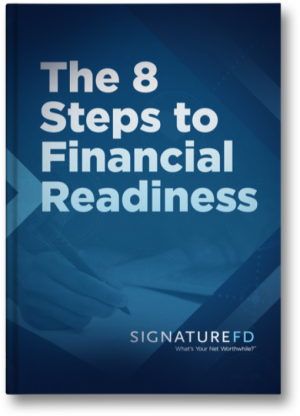
The SECURE Act: Major Changes in Retirement Planning
The Setting Every Community Up for Retirement Enhancement (SECURE) Act took effect on January 1, 2020. Summarized below are the key provisions with planning strategies that could help optimize your financial plan.
Stretch-IRA Provisions Eliminated for Inherited IRAs
All funds from a retirement plan inherited after January 1, 2020, must be distributed by the 10th year following the date of death. Distributions aren’t necessary from years 1-9, which gives beneficiaries some control over when they distribute funds and incur taxes. Spouses, individuals less than ten years younger, disabled, or terminally ill beneficiaries and minor children (until they reach the age of majority) are exempt and follow the pre-Secure Act guidance, but other rules apply.
Potential Strategies:
- Roth Conversions – Converting a pre-tax IRA to Roth during the original account holder’s life could result in less overall tax paid if the account owner’s marginal tax rate is lower than the beneficiary’s rate.
- Whole Life Policies – Life insurance death benefits are not taxable to beneficiaries. IRA owners can use IRA distributions or RMDs to fund premiums.
- Charitable Remainder Trust as the IRA Beneficiary – Use IRAs to fund a charitable remainder trust (CRT), which pays an annuity to beneficiaries over their lifetimes, like a pre-SECURE Act IRA and makes a final distribution to charity at the end of the trust term.
The Age Limit to Contribute to an IRA Eliminated
Individuals can continue to contribute to Traditional IRAs past the age of 70 ½. If over age 70 ½, this can help reduce adjusted gross income, which may reduce tax liability and Medicare part B premiums.
The Required Minimum Distribution (RMD) Age Increased from 70 ½ to 72
The RMD age has increased from 70 ½ to 72, beginning with anyone who turns 70 ½ in 2020 or later.
Potential Strategies:
- Roth Conversions – Roth IRAs are not subject to RMDs, so the account owner may decide to convert some IRA balances to a Roth to minimize future RMDs for a longer period than before.
- Qualified Longevity Annuity Contracts (QLACs) – Purchasing a QLAC up to $135,000 inside of an IRA may reduce RMDs and provide longevity protection to those assets’ owner.
Qualified Charitable Distributions (QCDs) Remain Beginning at age 70 ½
Individuals continue to be able to make charitable distributions from an IRA of up to $100,000 per person starting at age 70 ½. Even though the RMD age was increased to 72, the ability to make QCDs starting at 70 ½ was unchanged. Post 70 ½ IRA contributions, may disrupt QCD eligibility.
Part-Time Employees May Contribute to Employer Retirement Plans
Retirement plan eligibility is extended to part-time workers who have worked at least 500 hours per year for three consecutive years. Employers aren’t required to start the clock on a 500-hour year until 2021, so it is possible that these part-time employees wouldn’t be eligible to start contributing until 2024.
Potential Strategy:
- Retirement Plan Rollovers – RMDs are not required while working and contributing to an employer’s plan. Part-time employees may be able to roll existing IRAs and 401(k)s from prior employers into the current employer’s plan to delay RMDs. Note, this provision isn’t available if an employee owns more than 5% of the company, and it is allowed only on a plan by plan basis.
Expanded Opportunities to Use Qualified Fund for New Parents
New parents may distribute $5,000 from IRAs per child, per parent penalty-free. Funds aren’t tied to a specific type of expense. Distributions must be taken within a year of birth or adoption.
529 Plan Funds May Be Applied to Student Debt
529 beneficiaries may apply up to $10,000 (lifetime limit) towards student loan debt, for themselves or a sibling. This provision can’t be used in conjunction with the Student Loan Interest Deduction, making it beneficial for those above income phaseout for student loan interest deduction.
Kiddie Tax Rates Revert to Parent’s Rate
The Tax Cuts and Jobs Act of 2017 set kiddie tax rates equal to trust tax rates. The SECURE Act reverts kiddie tax rates to being taxed at the parent’s rate for unearned income above a threshold. Taxpayers have the option to amend 2018 returns to revert to using parent’s rate and may apply either rate for 2019.
New Provisions Encourage Small Businesses’ Adoption and Use of Retirement Plans
The tax credit for small businesses that establish retirement plans has increased to the greater of:
- $500 or $250 × the number of non-highly-compensated employees (HCEs) eligible to participate in the plan, up to $5,000 for three years.
A new $500 credit is available for small businesses that auto-enroll employees into the company retirement plan.
The passage of the SECURE Act has brought a number of changes around retirement plans and savings. There are several strategies to help you plan for the future and help mitigate the impact of the changes. The IRS has not yet provided guidance on any of the Act’s provisions. The above content may change in response to future IRS publications and court interpretation of the new law. Please work with your financial advisor, CPA, and attorney on your specific situation.
THE 8 STEPS TO FINANCIAL READINESS
Make the most of your wealth now and in the future while assessing challenges, opportunities, and risks along the way. That way, you can grow, protect, give, and live your wealth in a way that aligns with what matters most: your Net Worthwhile™.
THE 8 STEPS TO FINANCIAL READINESS
Make the most of your wealth now and in the future while assessing challenges, opportunities, and risks along the way. That way, you can grow, protect, give, and live your wealth in a way that aligns with what matters most: your Net Worthwhile™.






